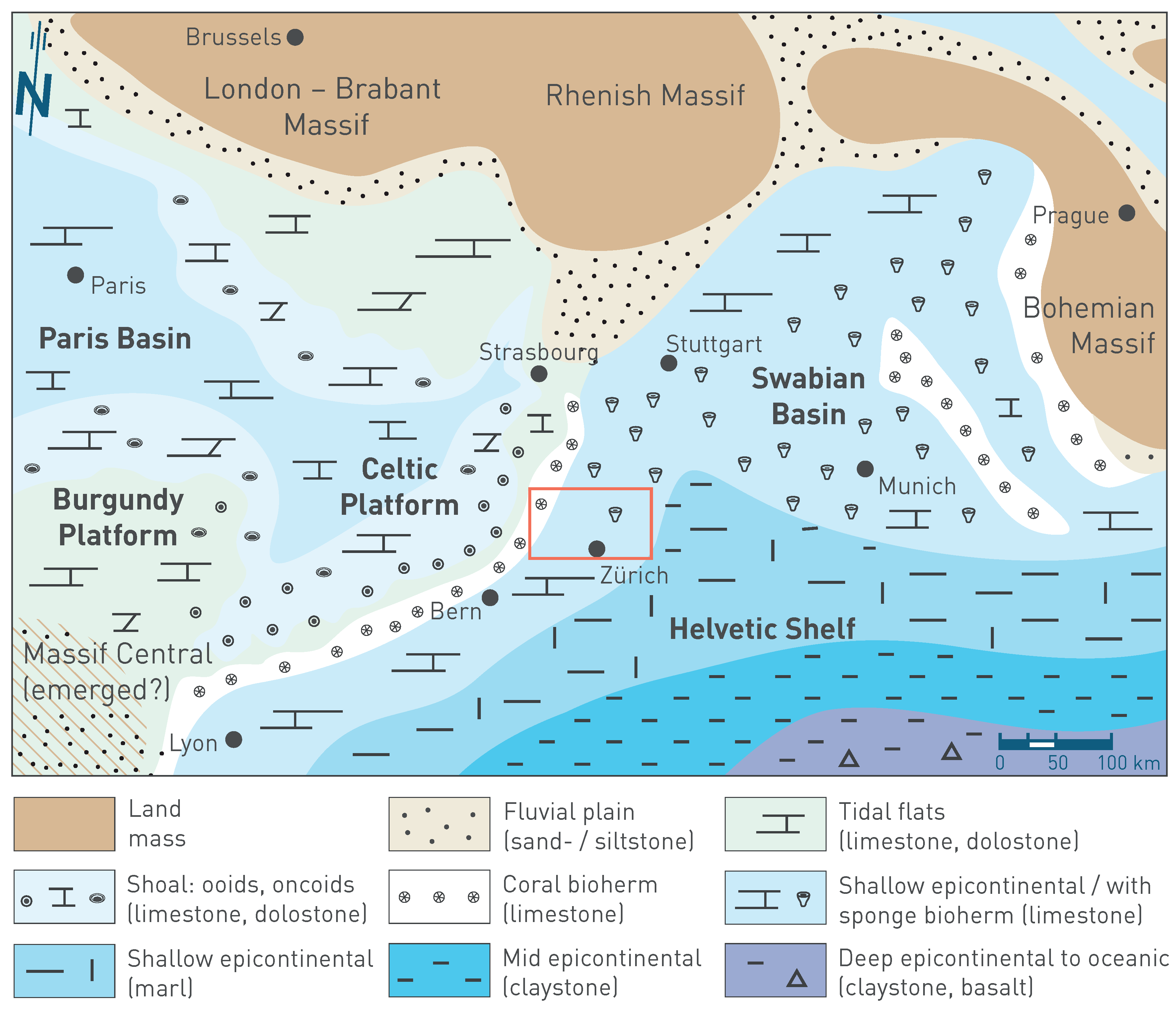During Late Jurassic times (Malm Group), the Swabian Basin including Northern Switzerland formed part of a shallow epicontinental sea (Fig. 3‑10). The nearest landmasses were the London – Brabant, Rhenish and Bohemian Massifs in the north and east. To the south, the shelf sea merged into the Piemont – Liguria Ocean (Geyer et al. 2023). Overall, the Late Jurassic formations show considerably less lateral variability than the underlying succession (Dogger Group above Opalinus Clay).

Fig. 3‑10:Palaeogeographic situation of Western to Central Europe in the Kimmeridgian during the sedimentation of the Burghorn Formation, «Felsenkalke» and «Massenkalk» and their time equivalents
The red rectangle shows the extent of the detailed palaeoenvironment maps (Section 4.2). Map based on Diedrich (2011), Geyer et al. (2023), Gouffon (2024), Gygi (2012), Jank et al. (2006), Koppka (2015), Krakow & Schunke (2017), Marty et al. (2007), Meyer & Schmidt-Kaler (1996), Püntener et al. (2015), Rauhut et al. (2017) and Schmid et al. (2005). The north arrow refers to present-day geographic north. The approximate locations of the cities are shown to simplify orientation.
Late Jurassic deposition started with a phase of reduced sedimentation that was followed by deposition in a more basinal setting or carbonate ramp (Swabian facies realm) adjacent to a carbonate platform located farther to the northwest (Celtic facies realm). The sedimentary rocks are dominated by calcareous marl and limestone, where regular interlayering is thought to reflect variations in climate and sea level (Wildegg Formation). In Northern Switzerland, the depositional centre was situated in the west, and sediment thicknesses decreased considerably towards the east. The region with the thickest sediment successions might reflect highest differential subsidence and/or highest accumulation by bottom currents (Allenbach 2002). Subsequently, predominantly micritic limestone (Villigen Formation, «Felsenkalke») with local bioherms (sponge reefs, «Massenkalk»), intercalated with more marly sediments (Schwarzbach Formation), were deposited in the shallow Swabian Basin. The youngest preserved Mesozoic sedimentary rocks in Northern Switzerland are of Kimmeridgian age; younger Mesozoic sedimentary rocks were eroded (Fig. 3‑4, Fig. 3‑6b, Section 3.3.3; Gygi 2012).

